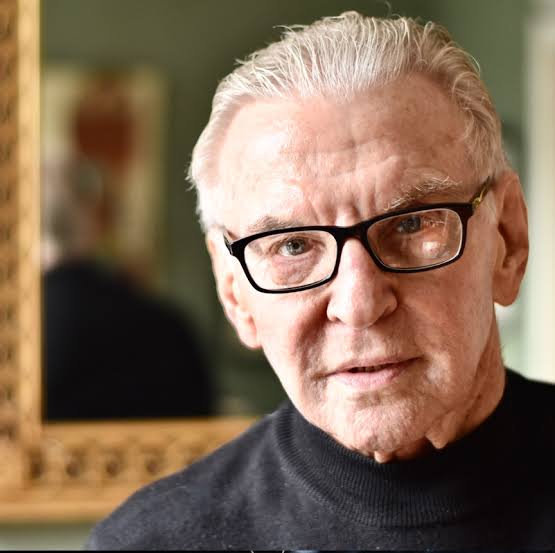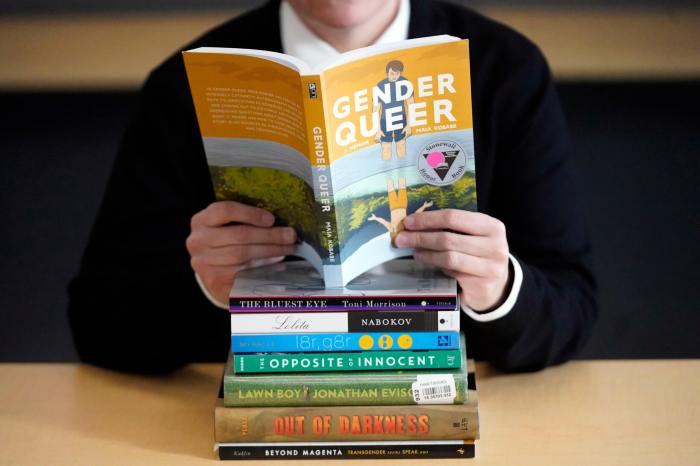David Halperin, a University of Michigan professor, wrote “How to Be Gay” based on his decade-old course. | HARVARD UNIVERSITY PRESS
Great, you think, a book for all gays — the newbies coming out, the deep-in-the-closets, the out-and-prouders — about getting the most from one’s homosexuality. The title and cover with male nude model suggest an ingenious self-help book. How should one “be” gay? Are you a hipster homo, two suburban dads ferrying offspring to Little League, an urban single puzzled by your flirty straight neighbor, a bear in a world where beards are ironic? It’s exhausting.
The right wing thought that University of Michigan academic David Halperin was running a nefarious recruiting class when his course “How To Be Gay: Male Homosexuality and Initiation” began in 2000. Halperin may like to castigate his gay and straight critics for overreaction (some gays claimed he was giving us “a bad name”), but the course and book title were clearly chosen to be provocative.
Everyone relax. This densely argued tome restates its title, slicing it a hundred different ways from a cultural studies perspective, interrogating — like the course — how certain cultural artifacts came to be seen as “gay” and how “being gay” came to be about knowing them. Much is made of scenes from “Mildred Pierce” (when daughter Veda slaps Mildred) and “Mommie Dearest (the coat hanger scene), as well as opera, drag, interior design… but no “Dynasty.” No Alexis. My formative ‘80s gay identity imperiled!
But then Halperin says, “Being gay gives you no automatic intellectual advantage when it comes to appreciating, understanding or analyzing gay culture” — straight men and women did better than gay students in class.
Of course they did! They were trying too hard; the gays were rolling their eyes at being told what to like and how to like it. Still, lucky devils, they acted out scenes from “The Golden Girls” and “Steel Magnolias.”
What could be a fascinating book, however, is muffled by Halperin’s impenetrable language. His book analyzes, he says, “the exact logic by which gay male subjects resist the summons to experience the world in heterosexual and heteronormative ways.” Like many academics in his field, Halperin believes cultural studies buzzwords are preferable to plain English. Mine isn’t an argument against intellectualism, just one for lucid language.
Halperin rightly notes that many in today’s young gay generation don’t care about the regal, damaged icons of yore — Joan, Bette, and Judy. They care even less about gay history. (One 25-year-old teacher I met recently asked what the Stonewall Riots were.) Emerging into a world of relative openness, they can watch actual gays on TV, not merely the ones channeled through ciphers. But as Halperin says, gay teens are still being bullied, some kill themselves. As long as they’re brought up in a “heteronormative” world, they will look for “gay culture.” Surely they would benefit from a much more basic “Gay 101” — Whitman, Wilde, key dates in our historical timeline — alongside the apparently vital study of Joan Crawford’s shadow against louvered blinds.
Gay male culture is both “routinely acknowledged as a fact” and “just as routinely denied as a truth,” Halperin claims perceptively. But his notion of “being gay” becomes confusing. He writes, initially, that it is about more than same-sex attraction, but rather “a mode of perception, an attitude, an ethos… a practice.” Later, he decries those who have de-sexed “gay.” Later still, he says “being gay is a social experience in the same way [as] being American, or middle class, or Chicano,” rather than “a natural condition or individual peculiarity.
White flag! How about we go for “attracted to members of same sex” and “cries uncontrollably when watching ‘Beaches’ totally sober?”
Halperin is, unsurprisingly, an advocate of “queer theory,” which disavows firm boundaries, definitions, and identities. For example, gay male desire “comprises a kaleidoscopic range of queer longings — of wishes and sensations and pleasures and emotions.” Everything, then.
He says, correctly, that the gay rights movement, so focused on showing gays to be like everyone else, sidelines thornier issues around rejection, alienation, and the “non-sexual dimensions gay people are unsure or nervous about.” He writes powerfully about gay male fears of the feminine and why younger gay men treat Garland, Streisand, and the “pre-sexual realities” enshrined in Broadway musicals “with phobic rejection, avoidance, repudiation.” Well, some do, some don’t. If, as he argues, “gay culture” isn’t monolithic, neither are “gay men today.”
Halperin lights some great theoretical firecrackers. Sketching how gay men find humor in tragedy, he quotes an obituary headline: “Moody Bitch Dies of AIDS.” In elegant riffs on melodrama and camp, he ponders why gay men react to women like Mildred Pierce “losing it” and why camp “undoes the solemnity with which heterosexual society regards tragedy, but camp doesn’t evade the reality of the suffering that gives rise to tragedy. If anything, camp is a tribute to its intensity.” He shows how “camp cuts beauty down to size,” taking “revenge on beauty for beauty’s power over gay men”.
But these bursts of zesty writing are hobbled by boggy detours into “heteronormative” this and “decoding, recoding” that. There is much rigorous study and entertaining analysis here, but it’s couched in such opaque, baffling language it makes me think if I took his course it would bore me straight.
Tim Teeman is US correspondent of the Times of London.

































